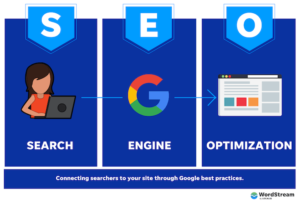Phoenix 3D Printing is the layer-by-layer fabrication of physical models and parts. It originated from the CAD industry and enables manufacturers to go from design to prototype to manufacturing with reduced lead times.
3D printers can use a range of polymer materials, allowing companies to quickly produce a wide range of products. This eliminates redesign cycles and reduces the risk of expensive tooling costs.

Before 3D Printing, engineers had to use a combination of hasty foam mockups and detailed clay models crafted by skilled artisans. These methods were incredibly time-consuming and expensive, limiting the number of part iterations they could do during each design cycle. 3D printers, however, allow engineers to produce a prototype in minutes. This shortens the design cycle and saves companies money.
During the design phase, rapid prototyping is used to demonstrate a potential product’s functionality and aesthetics to clients and investors. It also helps to ensure that the design meets specifications and is ready for production. Moreover, the technology enables designers and engineers to communicate with each other effectively by providing physical prototypes instead of relying on 2D drawings or verbal descriptions. This facilitates better decision-making and collaboration among team members, thus ensuring that the product is ready for market.
The most popular method of 3D Printing is material extrusion, which uses plastic or metal to create a three-dimensional object. This process can be used to prototype a wide variety of objects, from small toys to large aircraft parts. Unlike traditional manufacturing processes, 3D Printing produces less waste and requires fewer materials. In addition, it doesn’t require a large workforce to operate.
In the past, manufacturers would take months to produce a single prototype using machining tools. This is because they had to wait for the CAD model to be finalized, which was a time-consuming and costly process. With 3D Printing, the entire manufacturing process can be done in a matter of hours. This speed up the product development cycle significantly, allowing businesses to get new products on the market faster.
Another benefit of 3D Printing is that it can create complex parts that are impossible to manufacture with traditional methods. For example, the aerospace industry is leveraging the technology to reduce aircraft weight and improve performance. Boeing, for example, used titanium printed parts in the construction of its 787 Dreamliner. In addition, the technology is being used in the automotive sector to replace traditional components and enable more efficient fuel use.
In addition to its role in the design and development phases, 3D Printing is useful for marketing and sales. A realistic and visually appealing prototype can be a great tool for securing investments and generating interest. It can also be useful for demonstrating how a new product will perform in real-world conditions. Moreover, it can be used to test and gather feedback from end-users, which is vital for improving future products.
Designing for 3D Printing
3D printers are revolutionizing the way we make things. They combine top-of-the-line software, powder-like materials and precision tools to create a three-dimensional physical model from scratch. This is known as additive manufacturing, and it’s a process that’s rapidly evolving. It’s also a good way to teach skills like prototyping and iteration, design and modeling, and problem-solving.
The first step in designing for 3D Printing is to make a virtual design of the object. This can be done using computer-aided design (CAD) software, which is used to create precise drawings and technical illustrations. This virtual design will serve as a blueprint for the printer to build the actual item. The next step is to prepare the model for Printing by slicing it into layers. This is accomplished with a slicing program, which breaks the model down into hundreds or thousands of thin layers. Each layer is printed one on top of the other, until the entire object has been built.
Once the model is ready for Printing, it can be sent to the printer, which will use its own special software to construct the resulting physical object. The result is an item with visible layer lines, but this can be overcome by post-processing techniques. For example, sanding or polishing the surface of the item can improve its appearance. Orienting cylindrical features, such as columns, vertically will give a smoother surface finish.
Another consideration when designing for 3D Printing is the fact that printed objects are anisotropic, which means that they’re stronger in one direction than in another. This is due to the heating and cooling of the material during Printing. To avoid warping, designers should try to design parts with as few flat surfaces as possible. This will help prevent them from becoming brittle or warping when they’re printed.
A common mistake that people make when designing for 3D Printing is overusing supports. They should be used sparingly, and only when necessary. Supports help the model keep its shape while it’s being printed, but they can add a lot of weight to a finished part. This can be a real challenge for lightweight designs.
Using 3D printers for manufacturing
3D Printing can be used for a wide range of industrial applications. Typically, the technology is used to create prototypes that can be quickly modified and tested for usability. It is also used for manufacturing a wide variety of parts, from tooling and equipment to fixtures and jigs. In addition, 3D printers can be used to produce a variety of materials, including metals and plastics.
The ability to rapidly prototype new designs allows companies to improve their products and bring them to market more quickly. This is especially important for businesses that compete on a global scale. In many cases, reducing time to market can make the difference between success and failure.
Using 3D printers for industrial production can help companies save money and increase efficiency. It can also help them reduce the number of mistakes and rework that is necessary. In addition, it can provide a greater level of flexibility when preparing for high-volume production. For example, a company might need to test different sizes of a product with consumers before making the final decision.
Another use of 3D Printing for manufacturing is to create custom moulds for various products. This is particularly useful in the automotive industry, where 3D printers can be used to create a range of different components for vehicles. For example, a company may want to make a custom-made part for the dashboard of a car. This can be difficult to do with traditional molding techniques, but with a 3D printer, this process is much faster and easier.
3D Printing is also being used in the medical industry to produce medical devices. For example, it is being used to produce replacement joints for hips and knees, as well as facial prosthetics. In addition, it is being used to produce clear aligners, which are used to straighten teeth. In addition to speeding up production times, 3D Printing can also help reduce costs by allowing manufacturers to produce parts in small batches.
The first 3D printer was invented in 1984 by Chuck Hull, who patented his Stereolithography Apparatus. He designed the machine to create three-dimensional objects from a photopolymer, which was cured by UV light. In the early days of 3D Printing, the technology was expensive and cumbersome to operate. But as the cost of machines and materials has declined, more people have been able to access this technology.
Using 3D printers for repair
3D Printing is an additive manufacturing technique that creates a physical object from a digital model file. It builds parts layer by layer, allowing the creation of complex shapes and details. This process has been used to create everything from tools to food, buildings, and even organs. 3D Printing also teaches important skills, including prototyping and iteration, design, and problem-solving. In addition, it has become an essential tool for educators and students.
The first step in using a 3D printer is designing the object you want to print in a computer-aided design (CAD) program, such as Autodesk Inventor, FreeCAD, or PTC Creo. Once the design is complete, you will need to convert it into a format that your printer can understand. This is done by slicing the model into thousands of layers. Then, the slicing program will generate a set of instructions, called G-code, that the printer will follow to build the object.
Different types of 3D printers are available, but the most popular is fused deposition modeling (FDM). This technology uses a hot-melt material to build objects. It is typically used with plastics, but it can also be used to print metals and ceramics. It is an inexpensive option for small-scale production and prototyping, but it can be time consuming for large parts.
Other 3D printing methods include material jetting, which uses UV light or heat to harden photopolymers, metals, or wax. Nano particle jetting (NPJ) and drop-on-demand (3D) are two other forms of material jetting. Binder jetting, which uses an industrial printhead to deposit a binding adhesive agent onto thin layers of powder materials, is another type of this technology. Direct energy deposition (DED), which uses a laser to melt powder metals as it is deposited, is also a form of additive manufacturing.
Mechanics use 3D printers to produce tools, jigs, and fixtures that make it easier to fix cars and other vehicles. This technology reduces the time it takes to complete repairs, and it can help improve vehicle efficiency. It can also cut down on the number of errors during production. These errors can result in expensive repair bills or even a loss of revenue.

